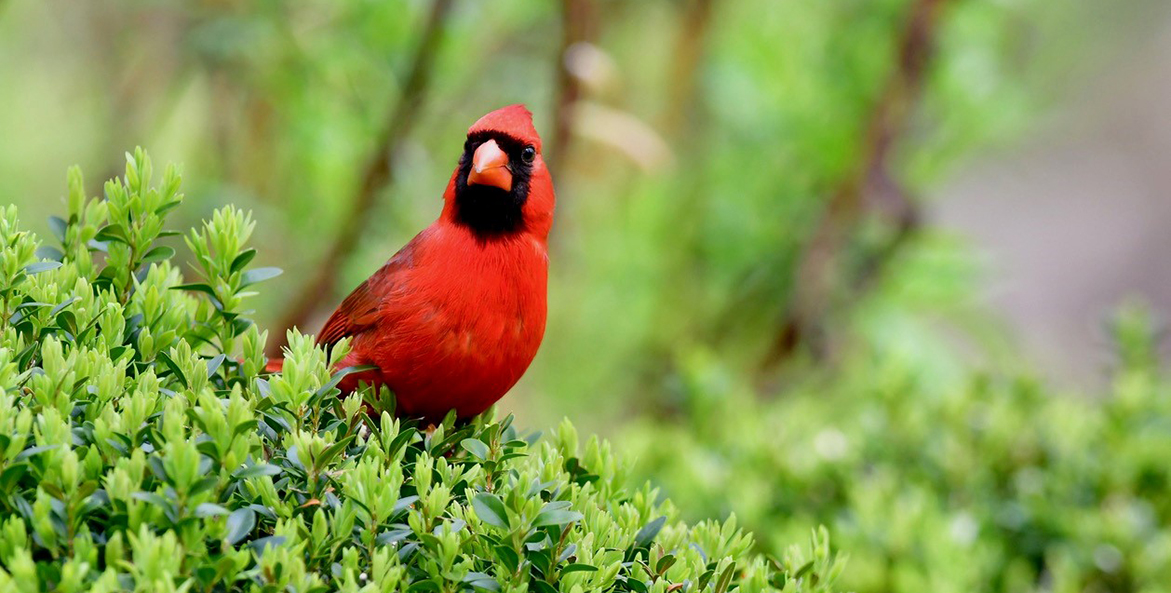This was originally published in the Free Lance Star.
Under stay-at-home orders, we’re spending more time than ever in our yards. Gardening gives us fresh air, exercise, and moments of peace that help us get through times of uncertainty. For me, my daily check on what’s blooming in the yard has become a treasured part of every morning.
Now is the perfect time to consider upgrading your yard so that it not only offers more beauty, but also creates habitat for wildlife and improves the health of the Rappahannock River and Chesapeake Bay. If we all join in taking steps at home, we can dramatically benefit our waterways, increase songbird populations, and find respite in our own backyards.
Virginia homeowners manage over one million acres of lawn, larger than the state of Rhode Island by over 600 square miles. But there’s a cost to all that grass. Those lawns require fertilizer, herbicides, and routine mowing, and create food deserts with nothing to eat for native wildlife.
By contrast, conservation landscaping—replacing turfgrass with native perennials, shrubs and trees—provides food and habitat for the songbirds, bees, and butterflies whose populations have plummeted across the country. There are nearly 3 billion fewer birds in North America than just 50 years ago—an astonishing 25 percent drop, according to recent research.
Native landscapes aren’t just good for birds, they also capture and absorb stormwater runoff from rooftops and driveways, preventing pollution from reaching waterways.
You can start small. When my family and I moved into our Fredericksburg home five years ago, we didn’t have time or money for a big once-and-done makeover. We began by removing “invasive exotics,” aggressive introduced species that escape yards and disrupt native landscapes. Native counterparts went in their place. We replaced burning bush (Euonymus alatus) with Virginia sweetspire (Itea virginica) and butterfly bush (Buddleia davidii) with American beautyberry (Callicarpa americana). Then we removed turf around the perimeter of our yard and installed winterberry hollies, sweet bay magnolias, pepperbush and little blue stem.
Take a moment to walk your yard looking for opportunities. Can you revitalize a place where turf has always been spotty, like that corner of your yard that’s too shady or wet for grass? Native plants like cardinal flower, mistflower, and ferns thrive in shady, wet environments. These are also perfect for soggy, shady areas that capture runoff from your gutters or driveway.
Maybe you’re tired of looking into your neighbor’s yard? American hollies and inkberry can act as a screen. What about that hillside that is too cumbersome to mow? Cover it in colorful perennials like black-eyed Susans, purple coneflowers, asters or Turk’s cap lilies. Still searching? Just expand the perimeter of existing planting beds.
You’ve selected your spot. Now remove the turf. A flat blade shovel laid almost parallel to the soil will pull up fescue, but if your lawn is filled with crabgrass or orchard grass that spread by deep-rooted rhizomes, you’ll need to smother them. Cover the grass in black plastic in the summer, followed by planting in the fall. Don’t leave bare soil uncovered, particularly if you’re on a slope. You’ll lose your topsoil and its valuable organic matter to erosion.
Turf gone, check. Now you’re wondering which plants to bring into your landscape. Is your previously turfed area in the sun or shade? Is the soil clay or sandy? Does it drain quickly or remain soggy after a rain? Is the soil acidic or alkaline? The answers to these questions will narrow down the list of native plants that will thrive in your spot with minimal maintenance and no added fertilizer or chemicals. Learn more with the free guide: Native Plants for Central Rappahannock Virginia. [Those reading this from other parts of the Chesapeake Bay Watershed can reference Native Plants for Wildlife Habitat and Conservation Landscapting—Chesapeake Bay Watershed.]
The design? Don’t overthink it. Let nature be your guide. Walk in the woods or open meadows and observe the layers—ground covers, shrubs and understory trees, large canopy trees. Each fills a niche to support wildlife. Consider the white oak, which supports over 500 species of moths and butterflies, or the river birch, which produces nutlets for songbirds while being a host for over 400 species of butterflies.
Even if you’re not up for wholesale changes, just planting one tree can set up a buffet for songbirds and brighten your yard throughout the year. For example, red osier dogwood stems turn bright red in winter and winterberry holly holds bright red berries long after it loses its leaves. Early spring flowering natives like serviceberries and eastern redbuds support native bees when food isn’t readily abundant.
While at home, take a moment to envision replacing some of your grass with lush native plantings. You’ll be taking the first step in a journey that will heal nature, benefit our waterways, and reward you with more songbirds in your corner of the world.
Ann Jurczyk, VA Outreach & Advocacy Manager, is a Chesapeake Bay Landscape Professional Level 2 Certified for Design and Installation



